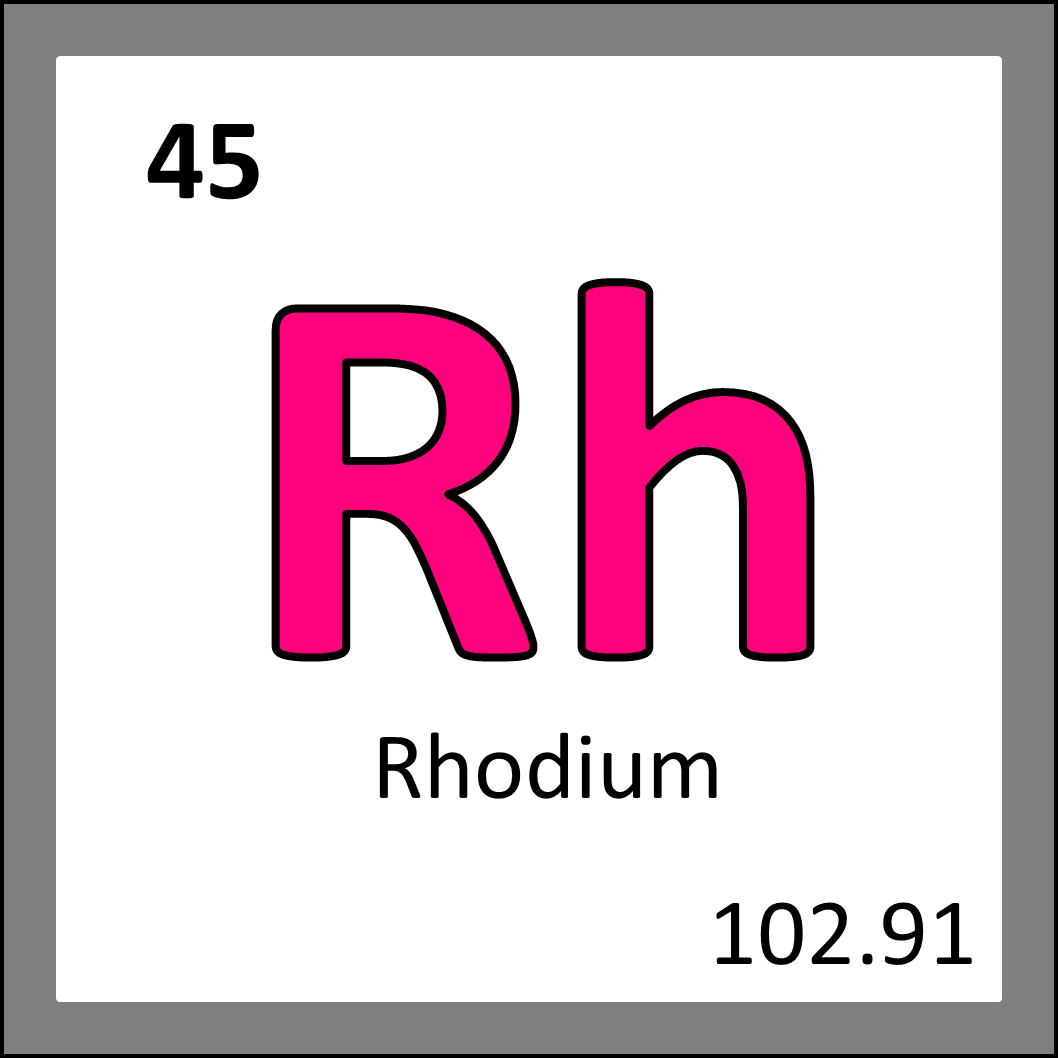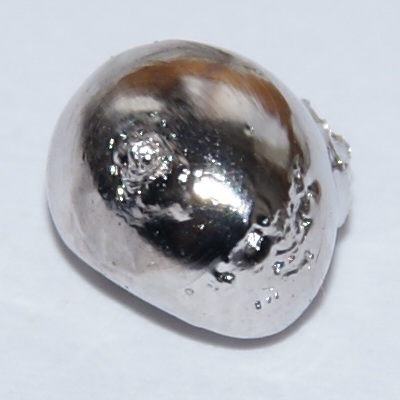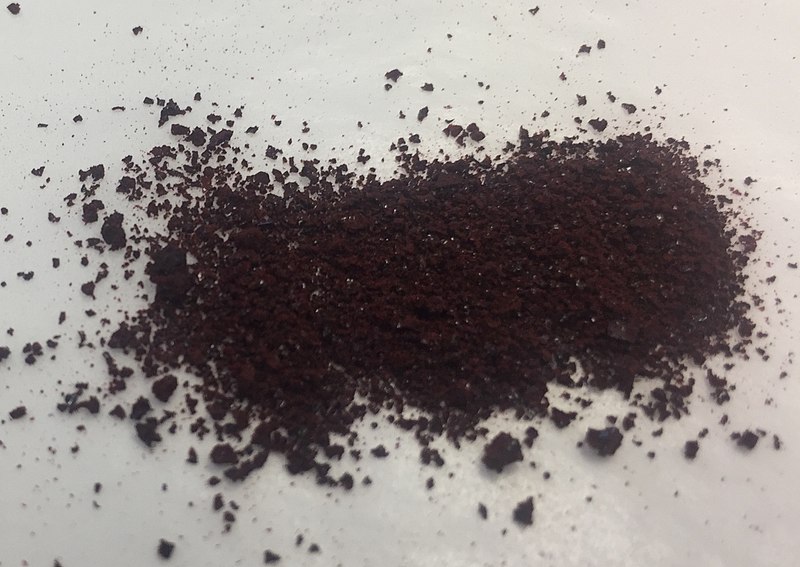


Clockwise from left: a rose, inspiration for the name rhodium (from Pixabay); rhodium as it appears on the periodic table; a round lump of rhodium (from Wikimedia Commons).
We have a double-billing of platinum group elements: following on from yesterday’s ruthenium is today’s rhodium. So we have another inert, robust, shiny transition metal that can be found in platinum ores.
The discovery of rhodium falls to English chemist William Hyde Wollaston in 1803. He dissolved platinum ore in aqua regis (a common way to discover platinum group elements) before subjecting the mixture to sodium hydroxide (to neutralise the acid), ammonium chloride (to remove the platinum), zinc (which precipitated any copper, lead, palladium and rhodium), nitric acid (to dissolve everything except palladium and rhodium) and then aqua regis again (to dissolve the palladium but not rhodium). After that long list of chemicals Wollaston finally added sodium chloride to the mixture to remove the rhodium as rhodium chloride. Rhodium chloride has a rose-red colour to it, leading to Wollaston naming the element after the Greek “rhodon” (ῥόδον), meaning “rose”.

The uses of rhodium will ring a few bells with anyone who has been keeping up with my latest posts. The main use of rhodium by far is in catalytic converters, devices attached to car exhausts that help convert more dangerous gases produced by combustion engines into something relatively safer. The rhodium part of the catalytic converter works to reduce (add electrons to) nitrogen oxides (which cause damage to lungs), converting them into safer nitrogen and oxygen molecules. Rhodium’s catalytic uses also extend to making chemical industries, being used to make nitric and acetic acid.

Rhodium’s reflective properties have been taken advantage of in coating optic fibres (for faster internet), optic mirrors (for spectrophotometers and solar panels) and headlight reflectors. The thermostability of rhodium has also led to its use in crucibles, which are vessels exposed to high temperatures for example in smelting, and thermocouple elements, which are temperature-sensing elements found in ovens that create a voltage depending on the temperature it is currently exposed to. So rhodium is with you from the moment you drive home, put your food in the oven and sit back streaming Netflix.

Rhodium has also gained some aesthetic uses. “Rhodium flashing” is when rhodium is plated on white gold or platinum jewellery, which gives it a temporary extra shiny surface until it wears off. Rhodium’s rarity has also given it a new status as representing something higher in achievement than bronze, silver, gold or even platinum. A rather wonderful example of this was when Paul McCartney of the Beatles was given a rhodium-plated record by Guinness World Records for being the best selling songwriter and artist of all time. The British crown jewels also contain rhodium-plated components.

And that’s rhodium- the automobile-essential, better than 1st place and rose-tinted element!

One thought on “Day 97: Rhodium”